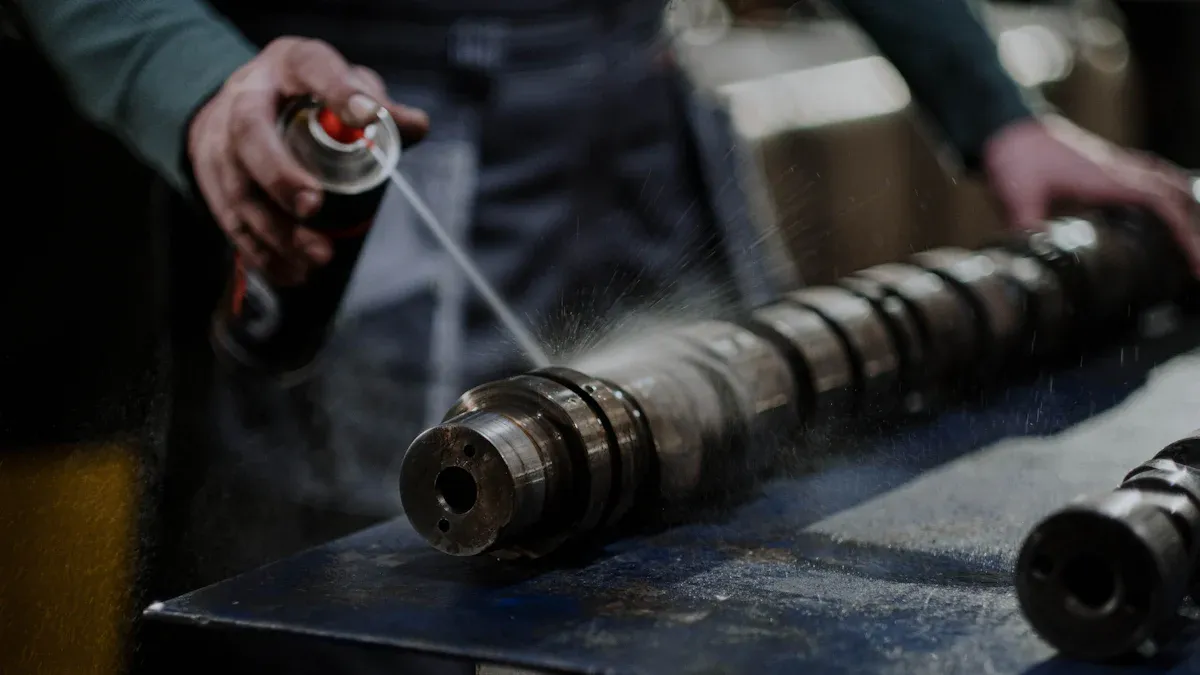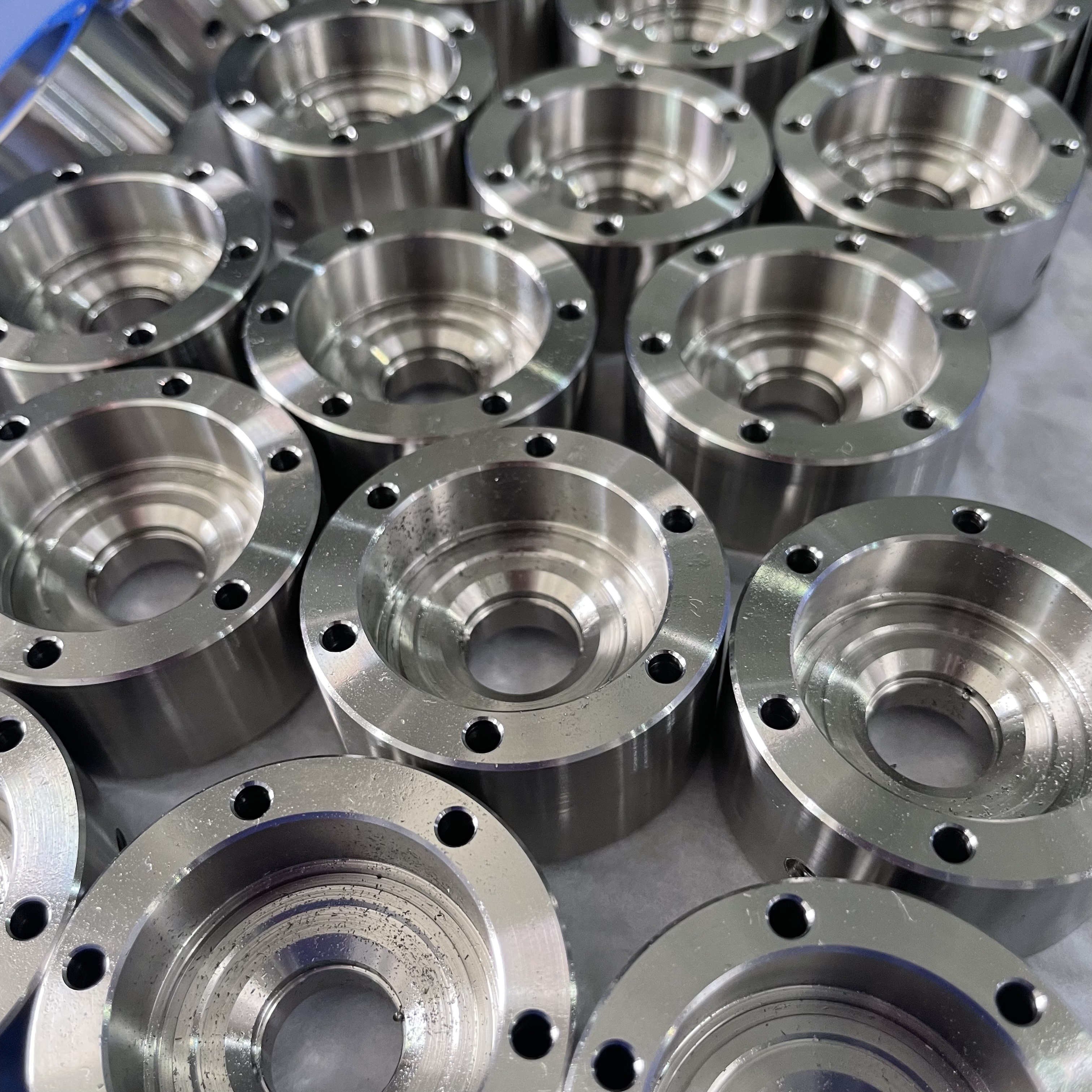What You Should Know About Tolerances, Specifications, and Material Selection in CNC Machining

Producing a cnc precision part requires careful attention to tolerances, specifications, and material selection. You must consider factors like material properties and machining capabilities to ensure efficiency. Manufacturers often face challenges such as feed miscalculations or tool path errors, which can damage parts. Regular machine calibration helps maintain accuracy in cnc machining.
Key Takeaways
Learn about tolerances to make sure parts work well. Tolerances show how much size can vary and still fit.
Pick materials based on what they can do and how the part will be used. Think about how easy they are to shape and handle heat.
Keep tight tolerances only where needed to save money. Use normal tolerances in less important spots to lower costs but keep good quality.
Understanding CNC Machining Tolerances

What Are Tolerances in CNC Machining?
Tolerances in CNC machining refer to the allowable limits of variation in a part's dimensions. These limits ensure that the part functions as intended, even with slight deviations during production. For example, a bracket designed to be 1 inch wide might have a tolerance of ±0.005 inches, meaning its actual width can range from 0.995 to 1.005 inches.
Tolerances are critical for maintaining the quality and functionality of CNC machined parts. In industries like aerospace, tight tolerances are essential for components such as flight controls and landing gear. Similarly, in the medical field, precision CNC tolerances are vital for surgical instruments and implants, where even minor errors can have significant consequences.
Types of CNC Machining Tolerances
You can choose from several types of machining tolerances based on your project requirements:
Standard Tolerances: Commonly used for general applications, such as ±0.005 inches for routers, lathes, and milling machines.
Bilateral Tolerances: Allow variations in both directions from the nominal dimension.
Unilateral Tolerances: Permit variations in only one direction.
Limit Tolerances: Specify exact maximum and minimum dimensions.
GD&T (Geometric Dimensioning and Tolerancing): Focuses on part geometry and ensures precise fits.
Tolerance Type | Standard Tolerance Range |
|---|---|
General Tolerance | ±0.005 in. (0.13mm) |
Precision Tolerance | ±0.002 in. (0.051mm) |
Reamed Holes Tolerance | ±0.0005 in. (0.0127mm) |
Feature Locations Tolerance | ±0.002 in. (0.051mm) |
How to Specify and Calculate Tolerances
Specifying and calculating CNC machining tolerances involves a few key steps:
Define the nominal dimension for the part.
Choose the appropriate type of tolerance, such as bilateral or limit.
Determine the tolerance range by setting upper and lower limits.
Clearly indicate tolerances on engineering drawings using standard notation.
For example, if a hole's nominal diameter is 0.25 inches, you might specify a tolerance of ±0.005 inches. This means the hole's diameter can range from 0.245 to 0.255 inches. Measuring CNC tolerances accurately ensures that your parts meet specifications and perform as expected.
Factors Influencing CNC Machining Tolerances
Material Properties and Their Impact
Material properties play a significant role in determining cnc machining tolerances. Softer materials, such as aluminum, may deform under cutting forces, leading to deviations in dimensions. On the other hand, harder materials like titanium can achieve tighter tolerances but often require specialized tools. Heat generated during machining also impacts tolerances. For instance, materials like copper and steel expand and contract with temperature changes, which can alter final dimensions. You should account for these factors when choosing cnc machining tolerances to ensure precision.
Environmental conditions, such as temperature and moisture, further influence machining tolerances. Variations in these conditions can cause materials to expand or contract, affecting accuracy. Understanding the hardness and thermal expansion characteristics of your chosen material is essential for setting accurate specifications. This knowledge helps you achieve the desired precision while minimizing errors.
Machining Processes and Techniques
The cnc machining processes you select directly affect achievable tolerances. Milling and turning, for example, offer different levels of precision. Milling machines with multiple axes provide greater flexibility and tighter tolerances compared to simpler setups. The number of axes in a CNC machine determines its ability to handle complex geometries and maintain accuracy.
Tool selection also plays a critical role. High-quality cutting tools reduce surface roughness and improve precision. Additionally, the skill and experience of machinists significantly impact the ability to maintain tight tolerance machining. You should consider these factors when choosing cnc machining processes to meet your specifications.
Cost Implications of Tighter Tolerances
Tighter tolerances often lead to increased machining costs. Achieving precision cnc tolerances requires advanced CNC equipment, which involves significant investment. Specialized tooling and higher-grade materials further add to expenses. Extended machining times are necessary to meet tight tolerance requirements, reducing production throughput.
Quality control procedures also become more rigorous with tighter tolerances. Frequent inspections and enhanced testing increase labor costs. Higher scrap rates may occur due to stringent specifications, resulting in wasted materials. To manage costs, you should limit tight tolerance machining to areas where it is absolutely necessary. Opting for standard tolerances in less critical areas can help balance precision and cost efficiency.
The Role of Material Selection in CNC Machining

How Material Selection Affects Tolerances
Material selection plays a critical role in determining achievable tolerances in CNC machining. Different materials respond uniquely to cutting forces, which directly impacts the precision of the final part. For example, metals like aluminum can achieve tight tolerances of ±0.001 inches due to their malleability, while plastics like PVC may only reach ±0.010 inches because of their tendency to warp. Materials such as steel and titanium are often preferred for applications requiring high accuracy, as they maintain dimensional stability under machining forces.
When selecting a material, you must consider its thermal expansion properties. Metals like copper and steel expand when exposed to heat, which can affect machining tolerances. Softer materials may deform under cutting forces, leading to deviations in dimensions. By understanding these material behaviors, you can ensure that your CNC machining tolerances align with the requirements of the part’s application.
Choosing the Right Material for a CNC Precision Part
Choosing the right material for a CNC precision part involves balancing several factors. Start by assessing the part’s final application and the tolerances it requires. For instance, aerospace components often demand lightweight materials like aluminum, while medical implants benefit from titanium’s biocompatibility. The machinability of the material also matters. Aluminum and brass are easier to machine, making them ideal for tight tolerance machining. In contrast, harder materials like tool steel require specialized CNC cutting tools and longer machining times.
The table below highlights some commonly used materials and their key characteristics:
Material | Key Characteristics | Applications |
|---|---|---|
Aluminum | High machinability, lightweight, corrosion-resistant, good strength-to-weight ratio | Aerospace, automotive, consumer goods |
Stainless Steel | Great wear and corrosion resistance, strength, toughness | Food processing, aerospace, pharmaceuticals |
Carbon Steel | Superior strength and machinability, works well with heat treatment | Structural components, tools |
Copper | Excellent thermal and electrical conductivity, malleable | Electrical applications, jewelry |
Titanium | High strength-to-weight ratio, corrosion-resistant, biocompatible | Biomedical applications |
Magnesium | Lightweight, strong | Aerospace, automotive |
Balancing Material Machinability and Performance
Balancing machinability and performance is essential for efficient CNC machining. Materials with high machinability, like aluminum, reduce production costs by allowing faster machining operations and minimizing tool wear. However, machinability should not overshadow performance requirements. For example, stainless steel offers excellent corrosion resistance, making it ideal for marine applications, even though it is harder to machine than carbon steel.
When working on large production runs, you should prioritize materials that are easier to machine. This approach minimizes cycle times and ensures consistent quality. However, for custom machined parts or applications requiring tight tolerances, performance characteristics like strength and durability must take precedence. By carefully evaluating both machinability and performance, you can achieve optimal results without compromising on quality or cost efficiency.
Tolerances, specifications, and material selection form the backbone of producing a high-quality CNC precision part. You must align these factors with the specific application to achieve optimal results. For example:
The end-use application should guide material selection, especially for load-bearing components.
Softer materials may require tighter controls to maintain tolerances and avoid deformation.
Final inspections during the design phase ensure accuracy in complex parts.
By understanding material properties and their impact on tolerances, you can optimize machining outcomes. This approach reduces costs and ensures that each CNC precision part meets its functional requirements. Always design parts with the material's characteristics in mind to balance machinability and performance effectively.
Key takeaway: Align tolerances and material selection with the application and machining capabilities to achieve precision and efficiency.
FAQ
What is the importance of tolerances in CNC machining?
Tolerances ensure that CNC machining produces parts that fit and function correctly. They define acceptable dimensional variations, which are crucial for precision and reliability.
How do you choose the right material for CNC machining?
You should consider the part's application, required tolerances, and material properties like machinability, strength, and thermal stability. This ensures optimal performance and cost efficiency.
Does tighter tolerance always mean better quality in CNC machining?
Not always. Tighter tolerances improve precision but increase costs and machining time. You should only specify tight tolerances where necessary for functionality or safety.
See Also
Achieving Excellence in CNC Machining: Tolerances and Materials
Grasping Material Needs for Precision CNC Machining Processes
Become Proficient in CNC Machining: Technical Drawings and Materials
Satisfying CNC Precision Machining Standards for Component Production
Recognizing the Significance of Precision CNC Machining in Production
About US
Follow Us
Your prototype holds unparalleled significance, and we deeply value its uniqueness. Collaborating with you during the preparation phase for running your prototype or parts is a commitment we gladly embrace. Whether it's a single part or a complex assembly, we are dedicated to selecting the optimal tools and pathways to bring your envisioned product to life.
At Precision Fab CNC Machining, we specialize in producing parts for prototypes, short runs, and high-volume production. Our prototyping machine capabilities extend across metal, plastic, and wood machining, with welding fabrication services available to complement and finalize your prototype if required.
Address
Address: Room320 10F, Building A,Nanshan international building, Dayawan District, Huizhou, Guangdong, 516001 China
Contacts
billy@timaycnc.com

